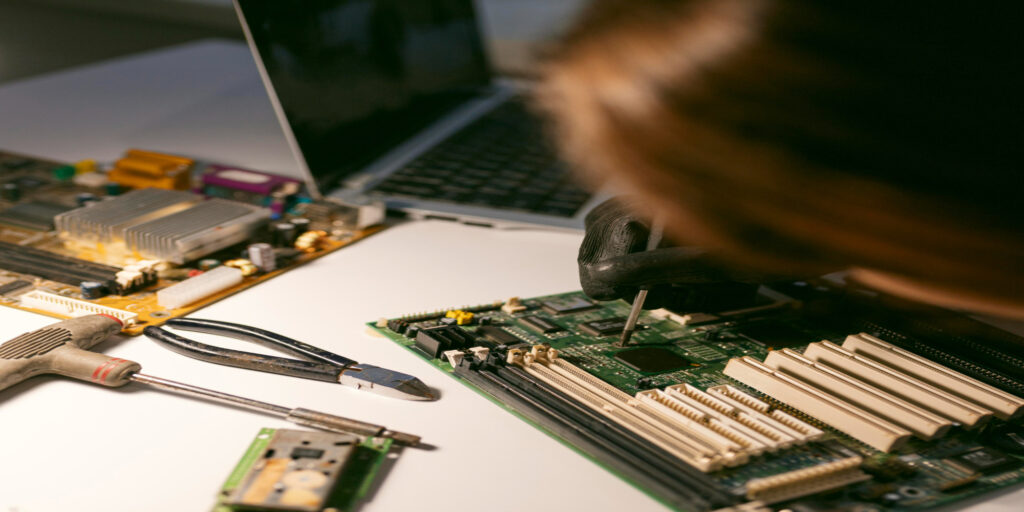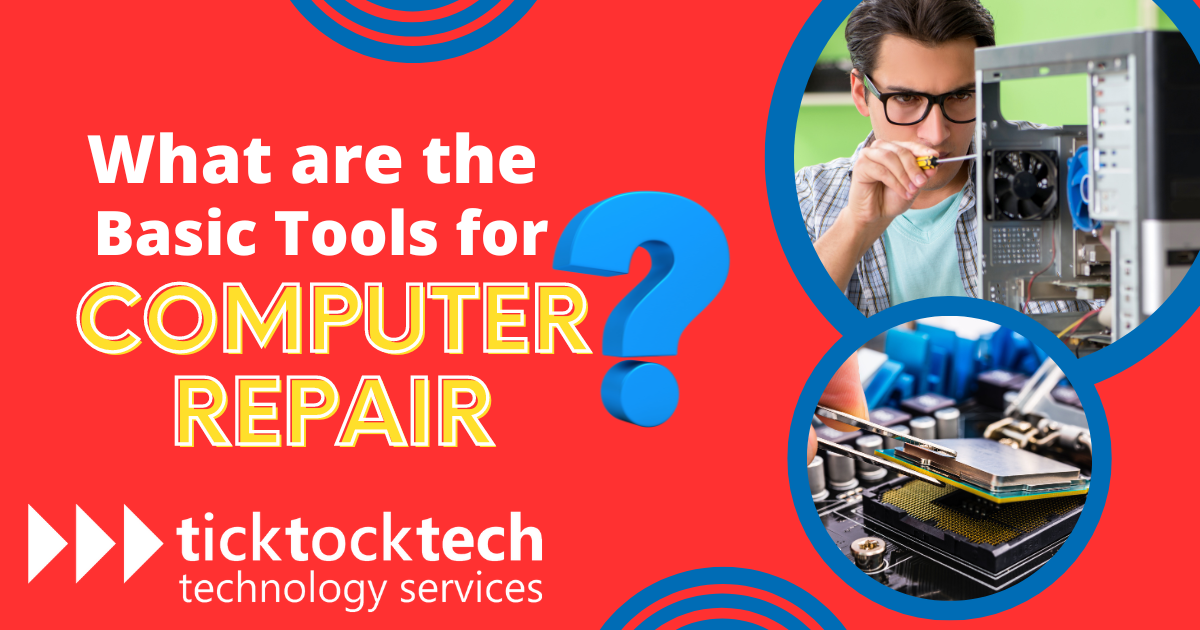Acquiring the right tools is crucial for every computer repair technician because it impacts the overall repair process. Proper tools do not only provide stability but also save time and money. When you work as a computer repair technician, your daily routine heavily relies on using high-quality tools. Therefore, it’s crucial to prioritize the care and maintenance of these tools.
Essential Tools During a Computer Repair

The necessary tools for computer repair depend on the type of repair, whether it’s related to software or hardware. Some repairs require handy tools, while others may require diagnostic tools to identify and assess the problem. Let’s explore the necessary tools for each type of computer repair.
1. Hardware Tools
Computer hardware components are susceptible to damage from different sources, including water spills, screen cracks, and component failures. Repairing these damages requires different types of hardware tools:
Handy Tools
These tools are found in every computer repair toolkit and come in different sizes, qualities, and prices. Some handy tools include:
- Screwdriver: An essential tool for any computer repair technician is the screwdriver, primarily used to tighten or loosen screws. Computer screws are available in different shapes, including star-shaped depressions, cross-heads, and slotted heads, and each requires a specific type of screwdriver.
- Hex driver: Also known as the nut driver. This tool can be used to loosen or tighten nuts, much like a screwdriver can be used for screws.
- Pliers: This tool is designed for gripping and holding objects and is indispensable for any repair work. Additionally, pliers can twist or loosen wires and terminals, making them a versatile tool in any technician’s toolkit.
- Tweezers: This precision tool allows technicians to handle tiny components like jumpers and screws, ensuring they are properly placed and secured during the repair process.
- Wire Stripper: The wire stripper is another essential tool that comes in handy during computer repairs. Its primary function is to remove insulation from wires, making it possible to knot them together or solder them to terminals.
- Antistatic Wrist Strap: This is a crucial tool for handling delicate components like circuit boards and microchips.
- Flashlight: A flashlight is a simple, yet indispensable tool for any computer repair service. It provides a source of illumination during repairs, enabling technicians to see and work on components in poorly-lit areas.
- Pearl-Catcher: A pearl-catcher is a tool that is necessary for removing components from tight spaces. Its thin and elongated design allows it to easily reach and extract small components that would otherwise be difficult to access.
- Crimper: This tool is particularly useful for repairing damaged cables or creating custom cables to meet specific needs.
Diagnostic Tools
Having the necessary diagnostic tools is important to validate and test computer systems. Some of the essential diagnostic tools that you should have include:
- Multimeter: A multimeter is an essential tool designed to test various electrical properties such as AC/DC voltage, electrical current, and cable properties. It allows technicians to accurately measure and check circuits and the quality of electricity running through them.
- Power Supply Tester: This tool evaluates the efficiency of a computer’s power supply. While some testers may only include indicator lights, advanced models can provide more detailed analysis by displaying voltage and amperage readings. This provides a more detailed analysis of the power supply’s performance.
- Loopback Adapter: Loopback adapters or plugs test and verify the functionality of computer ports. Loopback adapters simulate the connection of a device by completing a circuit when plugged into the port being tested.
Cleaning Tools
Regular cleaning protects your computer from dust and other harmful particles that can damage your device. Fundamental cleaning tools include:
- Lint-free Cloth: A lint-free cloth is essential to prevent the accumulation of dust in your device. This will prevent lint particles that can cause damage to your computer system.
- Compressed Air: Compressed air blows out dust from computer components. Using compressed air is an effective way to eliminate the need for manual cleaning, as it blows out dust and debris completely.
- Cotton Swabs: Dirt and grime can accumulate on hard-to-reach areas of computers. Cotton swabs are useful for cleaning such areas.
2. Software Tools
- Antivirus Software: Antivirus programs help to protect your computer by detecting and removing viruses and other harmful software. Some popular antivirus programs include Norton AntiVirus Plus, McAfee AntiVirus Plus, and Bitdefender Antivirus Plus.
- Disk Management Software: These utility applications monitor and maintain data during operations. Disk management programs assist in finding and fixing disk issues, setting up a drive for data storage, and deleting unneeded files. Examples of disk management tools include MiniTool Partition Wizard, EaseUS Partition Master, and R-Drive Image.
- Organizational Software: Organizational tools assist in keeping track of tasks, scheduling appointments, and managing files. Keeping documentation and organized files in an organization is crucial for future reference and resolution. Examples of organization tools include Trello, Evernote, and Google Keep.
- Data Recovery Software: These applications retrieve files that may have been accidentally deleted or lost due to formatting issues. Data recovery software scan and retrieve files erased due to system formatting or corruption. Common examples include Recuva, EaseUS Data Recovery Wizard, and Stellar Data Recovery.
Related: How to Repair Or Upgrade Your Computer at Home
Frequently Asked Questions on basic tools for computer repair
The tools needed for computer repair vary depending on the specific issue. However, the most common computer repair tools include screwdrivers, pliers, wire cutters, and the multimeter.
Acquiring the most fundamental hand tools, such as screwdrivers and pliers, is crucial. Consider buying an essential toolbox that includes these necessary items if you still need them.
If you unintentionally break apart, halt the repair and get help from an expert. Attempting to repair the component yourself may cause further damage.
Conclusion: Basic tools for computer repair
For successful computer repairs, it’s essential to have the right equipment. This equipment can range from hardware tools to antivirus software and data recovery programs. It’s crucial to invest in high-quality tools and toolkits that are designed specifically for fixing computers.
If you cannot repair your device, it’s advisable to seek the help of a professional computer technician. Repair technicians have the expertise and specialized tools to diagnose and fix complex computer issues.

